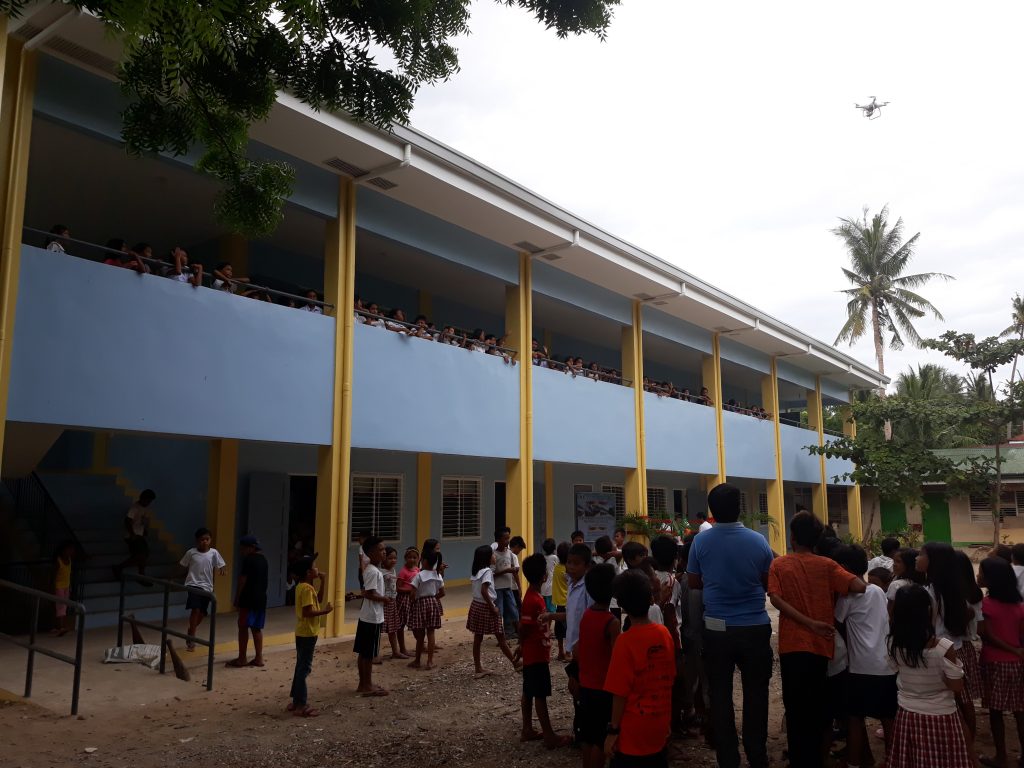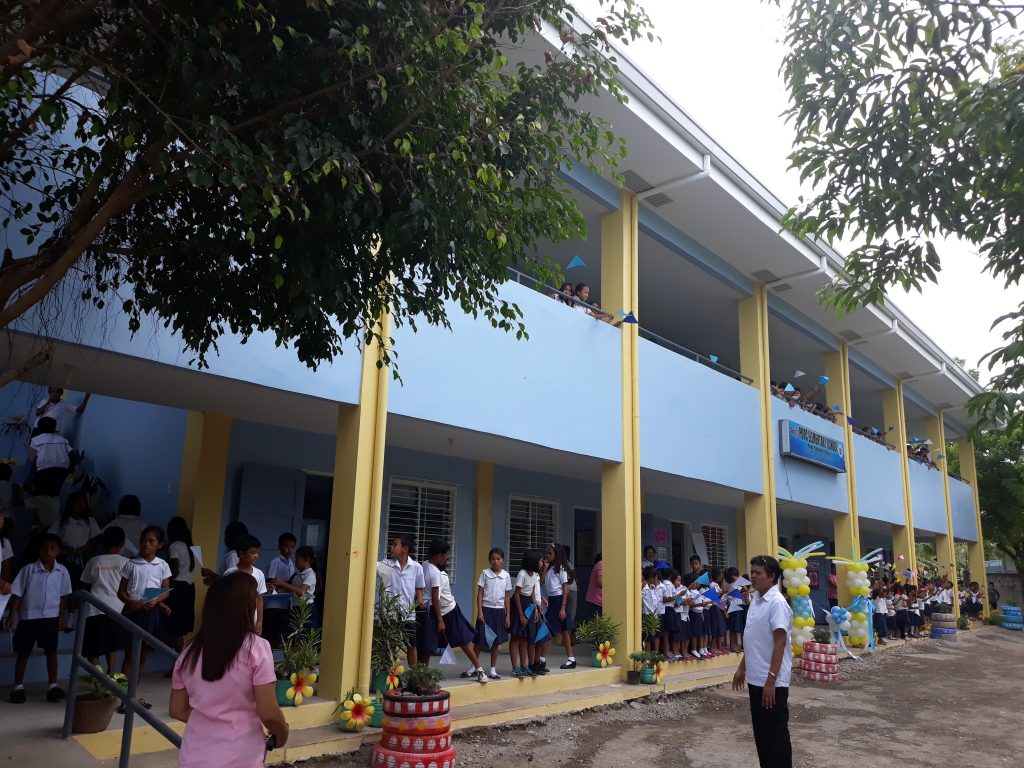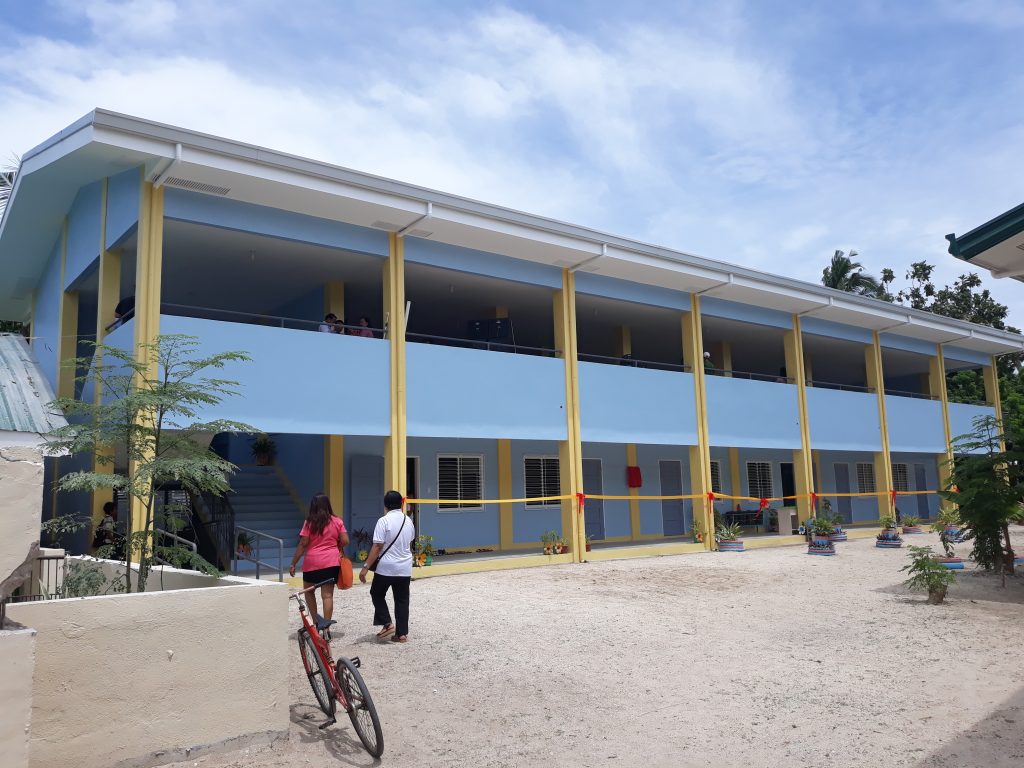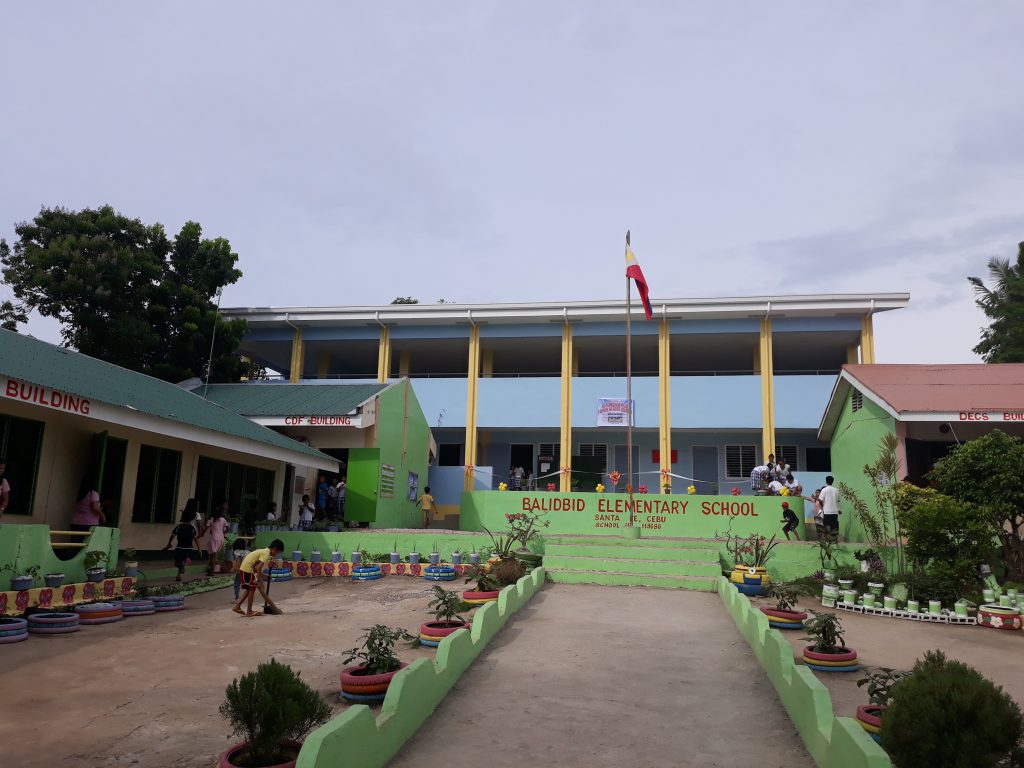



Previous
Next
Before the nice pictures and fanfare that accompanied the recent ceremonial turnovers of new school buildings and classrooms in Santa Fe, Bantayan, the abridged back stories of these infrastructure projects — stories similarly shared in about 80 other school sites all around Cebu, often overshadowed by the ribbon cuttings and marker unveilings — have to be told.
A year before the turnover, groundwork already starts for a particular school project site. A project cycle (starting after the annual budget is approved) from site identification to the final inspection and acceptance of the finished building takes about 260 working days.
Project engineers and program officers then engage project stakeholders — school heads are asked to submit data, the local government unit (LGU) commits to its counterpart fund, school community participates in school governance, school communities are trained in materials inventory and project monitoring, and at least 400 native trees are planted for every new classroom built. Project engineers, who are managing other project sites at the same time, then monitor/follow-up materials deliveries and the work of third-party contractors or LGU manpower by regularly visiting and inspecting project sites. And, of course, the tons of paperwork.
Fast forward to the handover of five new school buildings in four schools in Santa Fe, Bantayan last July 18, 2018.
Senior Project Engineer Ricky Morillo and I left Ramon Aboitiz Foundation Inc. (RAFI) at 3:30 a.m. for Hagnaya, San Remigio (110 kilometers away from the city). Program Officer Abigail Basas was doing a Seal of Excellence in Education Development (SEED) orientation and could not join us. Along the way, we picked up RAFI Micro-finance, Inc. (RMF) North Area Manager Edward Butal in Catmon. It was an opportunity for Edward to link up with potential clients in Santa Fe’s school communities.
We arrived at Hagnaya Port with a few minutes to spare for a quick breakfast of tinuwang isda before getting on the 6:30 a.m. ferry for the 1½-hour ride to Santa Fe, Bantayan. Straight from the Santa Fe port, we were in Balidbid Elementary School before 8:30 a.m. for the ribbon cutting, marker unveiling and photo ops. The same rites were they conducted in Marikaban Integrated School, Pooc Elementary School, and Santa Fe Central School where a program and lunch was hosted by all four schools.
In their speeches, officials from the Department of Education and Santa Fe Mayor Jose Esgana were appreciative of the new school buildings/classrooms from RAFI. We were also invited to speak to various stakeholders and we took the opportunity (a standard in all handovers) to report on their project participation ratings from the RAFI-Internal Audit team. Likewise, stakeholders were encouraged to actively participate and improve on the SEED program. The consolidated scores of schools on SRP project participation and SEED participation and improvement, amongst others, are factors in determining the priority of school divisions/districts in the RAFI School Rehabilitation Program (SRP).
After a quick lunch, Ricky and I got on the 1:30 p.m. ferry to Hagnaya and were finally back in RAFI at 6:30 p.m.
It was a very long day to culminate a story that actually started more than a year ago. Several similar ones are ongoing while the beginning of more stories are already being conceived.
Quick facts:
|
School |
Type of Buildings Replaced |
New Buildings Built |
|
Balidbid Elementary School |
1999 DECS |
2-storeys, 3 classrooms (ground floor) |
|
Marikaban Integrated School |
1986 Bagong Lipunan 1997 Demountable |
2-storeys, 6-classrooms 2-storeys, 3-classrooms @ GF, open-hall @ 2F ready for future 3-classrooms |
|
Pooc Elementary School |
1995 Demountable |
2-storeys, 6-classrooms |
|
Sta Fe Central School |
1966 Magsaysay |
2-storeys, 3-classrooms @ GF, open-hall @ 2F ready for future 3-classrooms |
|
Total cost of 5 buildings |
P32.9M |
|
Current equivalent classrooms |
27 |
|
Average cost per classroom |
P1.22M |
|
LGU counterpart |
7.3% |
|
No. of trees planted by school communities |
17,815 |
|
Senior Project Engineer |
Ricky Morillo |
|
Program Officer |
Abigail Basas |
The Education Development Unit of the Ramon Aboitiz Foundation Inc. (RAFI-EDU) helps in the formation of effective learning environments by providing high-quality, cost-effective school infrastructure and by capacitating school communities for the continuous improvement of learning outcomes.


